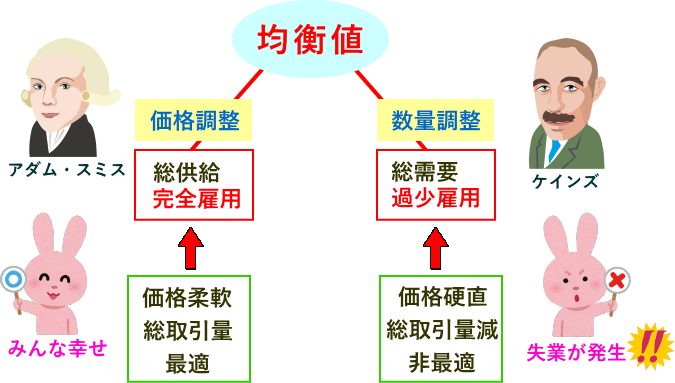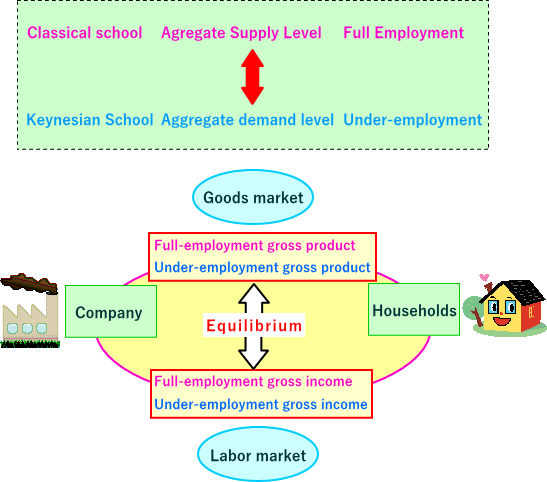macroeconomics(マクロエコノミクス)
マクロ経済学(まくろけいざいがく)
マクロ経済学(英語版)
What is Macroeconomics?
Macroeconomics is the study of thinking about Equilibrium in the market economy system based on the size of the total production( GDP) .
From the size of the total production(GDP), research that considers the optimality of market economy is called Macro analysis.
On the other hand, from the mutual relationship between aggregate demand and aggregate supply, research that thinks about the optimality of market economy is called Micro analysis.
Gross Production =Gross Income
Gross Production is an abbreviation for Gross Domestic Product (GDP), which is the total transactions amount of the final product of one country. Gross Production is regarded as an equilibrium value in the goods market.
On the other hand, Gross Income is an abbreviation for Gross Domestic Income (GDI), which is sales proceeds from Gross Production. Gross Income is regarded as an equilibrium value in the labor market.
Gross Income is the amount that shows the value of employment in monetary amounts and is distributed to households through the labor market. Therefore, Gross Production and Gross Income are the same.
Classical School and Keynesian School
There are two theories in macroeconomics, the Classical school and the Keynesian school. The classical school that inherits the theory of Adam Smith and the Keynes school that the prominent British economist, John Maynard Keynes (1883-1946) founded.
The classical school thinks that total production (GDP) will be decided at the level of aggregate supply.
On the other hand, the Keynesian school thinks that total production (GDP) will be decided at the level of aggregate demand.

Keynes's question
Keynes questioned the micro theory advocated by Adam Smith.
In micro theory they think that "Unemployment does not occur because the market is in equilibrium". However, unemployment has occurred in real society and many people have been suffering from poverty.
Keynes' General Theory
Keynes tried to explain the mechanism of the market economy where unemployment occurs, and in 1936 published "General Theory of Employment, Interest and Money".
Keynes's idea in "General Theory" is that "If the level of total income is underemployment level (occurrence of unemployment), the total production amount will be Under-employment Gross Product (amount)".
Keynes analyzed that the level of gross output in the case of "unemployment occurred" would remain at Under-employment Gross Production, and announced the National income decision theory that "Demand determines the total production(GDP). This theory is called "principle of effective demand".
(The term "equilibrium" is used in the sense of "establishment of transactions." The equilibrium at the aggregate demand level is not optimal (state).)
Equilibrium in micro theory is full employment
For comparison, if macro theory is macroscopic (converted using Say 's laws), we believe that the level of the total production is the full employment gross product and full employment is realized in the labor market. Unemployment does not occur.
For comparison, if macro theory is macroscopic (converted using Say 's laws), we believe that the level of the total production is the full employment gross product and full employment is realized in the labor market. Unemployment does not occur.

金融大学TOP > よくわかる!金融用語辞典 > マクロ経済学(英語版)

 参考 :
参考 :